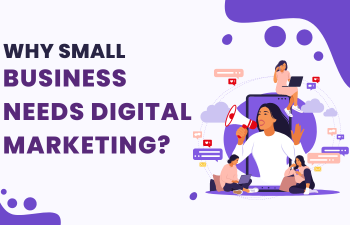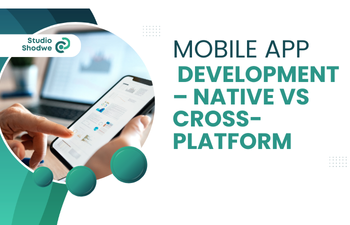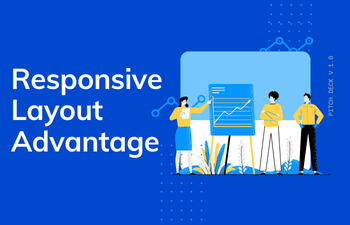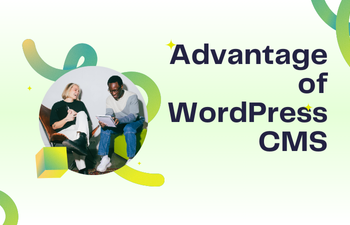 Digital Marketing
Digital Marketing
why small business needs digital marketing?
Needs of digital marketing
“Marketing is not the art of finding clever ways to dispose of what you make. It is the art of creating genuine customer value”- Philip Kotler
Digital technology has drastically changed the way businesses operate today. Now, ad agencies approach their ad campaigns in a remarkably different way.Big businesses and brands are not only the ones who benefit from online marketing. In fact, small businesses can also benefit immensely from digital marketing. Hence, businesses today are utilizing the digital universe to create brand awareness, impact and drive customers.
What about you?
Digital Marketing has an unbelievable impact on the people’s interactions, habits, and lifestyle. Let’s see how:-
• With the increasing accessibility of the internet, the number of people going online is ascending every day. As of 2018, approximately 3.03 billion people (which is half of the world population) are on some type of social media.
• Search Engines drive around 93% of all website traffic.
• 82% of people use their phones to make an online search before they make the decision to purchase from a store.
• 50% of consumers are inclined towards a particular brand if the name appears more than once during their search.
The aforementioned statistics clearly indicate that the impact of digital marketing is ever-increasing.
But, before we proceed, let’s have a detailed understanding of the term ‘Digital Marketing.
Digital Marketing refers to the marketing activities of a company that are carried through electronic devices or the internet. The type of marketing uses various digital strategies by businesses to connect with their customers. In simple words, digital marketing is the marketing that is done online. There are various methods under the spectrum of digital marketing, which are as follows-
• Search Engine Optimization (SEO)
• Pay-Per-Click (PPC)
• Content Marketing
• Social Media Marketing (SMM)
• Affiliate Marketing
• Email Marketing
• Inbound Marketing
The good news is that, as a business entity, you will be able to make your choice from the various digital channels to develop brand awareness and generate leads. The performance of each channel is measurable and hence you can evaluate your company’s performance across each channel and derive the best decision. However, the digital marketing strategies and plans will differ depending on the type of your business – whether it is B2B or B2C.
First of all, let’s proceed with the changes led by digital marketing and how it impacts the way businesses operate:-
Why Digital Marketing Can Help You Grow small Business?
Why do small businesses need digital marketing is a question we regularly get asked. Small business -with limited marketing budgets – is competing with national and international brands when it comes to marketing. In this ever-growing digital era, small businesses have no other options but to compete with corporations at having much larger marketing budgets. The online attribute required of companies demands that small businesses compete on a larger scale.
#1. Gain Exposure through Quality Content
Creating great content is the best way to create a viral effect. You can do this by posting great images, funny videos, memes, or writing interesting, compelling blog posts. This is how you differentiate yourself from competitors – have your personality shine through. The more content you produce, the more exposure you will get. And for small businesses, creating content is an extremely inexpensive way of marketing.
#2. Direction
Companies without a digital strategy generally don’t have clear strategic goals for what they want to achieve online in terms of gaining new customers or building relationships with existing customers. And without a clear objective, you likely won’t put enough resources into reaching the goals and won’t be evaluating analytics. All of which can have massive impacts on your digital marketing efforts.
#3. Cost Effective
Digital marketing is more cost-effective than traditional marketing. This is especially important for small businesses as they don’t have many resources or capital. New media can provide you with a cheaper and more effective advertising channel.
#4. Higher ROI
By increasing your digital outreach you can potentially increase your revenue. The more exposure you can gain for your brand, the more leads you will generate. The more data you can extract from your outreach campaigns, the higher your ROI will be.
#5. Get Ahead of Your Competition
Most businesses have already traded traditional advertising methods and are focusing on Google Ad words, SEO, Social Media, or SMS. With so many competitors out there it is very difficult to market your small business and get ahead of the pack. Monitor what is working for you, what your current and potential customers are engaging with. Once you know what’s working for you, repeat.
#6. Allows You to Optimize Your Budget
Digital Marketing is not only more effective than traditional marketing. It is also more efficient. Instead of randomly distributing collaterals for everyone and anyone to see, you are selectively targeting the recipients of your content.
A targeted or focused marketing approach allows you to optimize your budget. You create content with more thought and purpose. Your blogs, articles, and other types of content such as videos and infographics are intended to provide information that is relevant to the needs of your market.
#7. Track Your Performance and Measure Results in Real Time
The availability of online analytics is the game-changer for Digital Marketing. With online analytics, you track the performance of your Digital Marketing campaign. You can measure results in real-time.
You can see your small business growth because digital marketing provides equal opportunities to every business. It is not a strategy only restricted to big corporations or multinational companies. Small businesses can actually leverage their business with the help of digital marketing. They can stand in perfect competition with established businesses. Also, they can make full use of digital marketing by engaging different clients on different platforms.
#8.Helps in conversions
Conversions can be tracked by understanding the traffic that turns into subscribers, leads and deals. Good news: The conversions with digital marketing are higher when compared to other forms of marketing. Therefore, small businesses should make efforts to draw strong digital strategies that aim for higher conversions.
#9.Increases revenue
A successful digital marketing strategy gives more conversions. The revenue also increases as a result of higher conversion rates. Companies that use social media generate 78% more business compared to the companies that do not use social media marketing. The response from email marketing is also high. A combination of content marketing with other marketing strategies together brings a high response and resultantly impacts the revenue.
Uniqwebtech is a digital marketing agency which helps small businesses to increase sales, visibility and engagement through their unique business strategy. So what are you waiting for?










